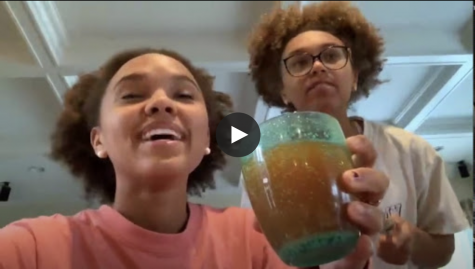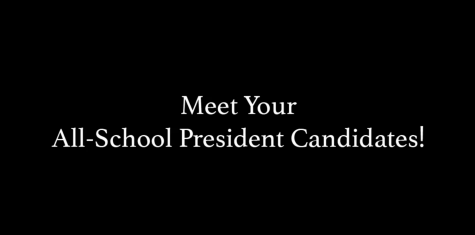Inter-dorming Q&A with Ms. Perrenoud
The following is an interview with Mrs. Heather Perrenoud, dean of residential life. The Record posed some of the questions most frequently asked by students about the new inter-room visiting policies, to learn more about the policy and motivations for the change.
How long will the trial period of the current inter-room visiting policies last? What will happen at the end of the trial?
This will be an on-going process throughout the year. There are some changes that could be possible more immediately, prior to the end of the marking period, which was originally the target for the trial period.
On the online petition, many students expressed the belief that the change was attributed to the new all-gender dorm. How would the administration like to respond to individuals who believe the change is because of the new all-gender dorm?
While the change in policies may appear to relate to the all-gender dorm, that is not the intent. I think one of the reasons this perception exists is due to how the new policy impacts same-gender visitation. In regard to pervasive, negative behaviors happening behind closed doors – these are happening during same-gender as well as between-gender visitation. The message being sent by only requiring supervision or an open door when boys and girls visit each other implies a particular relationship status that students have long complained about.
What statistics were used to support the new policy?
We did not consult specific statistics, rather knowledge of past disciplinary cases, CCC cases, dorm logs, dorm nightly notes, dorm heads discussions, proctor feedback, Stu-Fac discussions, and student support meeting discussions.
Why are some rules about the policy included in The Almanac, while others are not?
Given the inability to collect feedback from students and a wider range of adults prior to the start of school, we left some specific details regarding [the] procedure to be solidified and communicated at the start of school.
Can you clarify the upperclass students and lowerclass students visitation policy? Will siblings be able to visit each other? What was the value behind this rule? Why is it not in The Almanac?
For the start of the year, we decided to begin with a separation in visitation by age (siblings are excluded, which has been unclear to many and only clarified when people ask) to keep in line with how visitation played out in the past. Since lowerclass [students] were only allowed to inter-room visit on Saturdays, and check-in happened with a faculty member with the door wide open during visitation, this was not a concern and did not need to be explicitly stated.
Would you be willing to bring sleepovers back if the tracking system was more accurate?
Tracking is not the only concern. Sleepovers are not inclusive, negatively impact sleep, and contribute to more of the pervasive behaviors and breaking of school rules happening late into the night when faculty have gone to sleep and there is no active supervision.
Were lawyers involved in the creation of any of these rules? If so, which rules?
Not directly. As a school, we are always thinking about protecting students and mitigating risk, which means getting regular feedback about policies and procedures from legal counsel.
Are any of these rules dictated by CT law? If so, which cannot be changed, regardless of student feedback?
No
Below is the email that was sent by Ms. Perrenoud and forwarded to the student body by Caitlin Reilly ’19 on August, 30:
School and Class Presidents,
I want to thank you for engaging with your classmates on the issue of respect in response to the petition last week. Please continue to lead in this area. In response to your emails, I wanted to provide you with some more information on the process and rationale for the new dorm visiting policies, so that you could communicate with your classmates and help them understand the origin and intent of the policies. I look forward to meeting with you early in the school year to discuss your concerns and ideas, but please understand that the policy in the Almanac is the policy that will be in place at the beginning of the school year. If changes are to be made, they will come once we have had a chance to test this experiment and see what improvements will work best for the whole community.
The Philosophy behind this approach
The bottom line is that these policies are intended to increase the opportunity for inter-dorm and inter-room visitation while simultaneously providing for greater openness, safety, and accountability. Through analysis of both empirical and anecdotal data, we directly tied pervasive, negative behaviors–including hazing, bullying, gender-based harassment, and substance use to students being in unsupervised and closed spaces. We were prompted to engage students and adults in ways we could examine structural policies in order to address immediate concerns. The goal was to start the year with new procedures and policies that would ensure that all students were safe, seen, and supported. Additionally, we identified a real safety risk (eg: were there to be an emergency event, a faculty member would have no way of assessing how many students were in a dorm at any given time). With this policy, we are in fact, along with Andover, on the leading edge of what is considered best-practice for residential living in the secondary setting by our peer schools. We intend to seek regular feedback and to make adjustments as necessary, based on the input from both student leadership and residential faculty.
The Process
Various faculty representing different constituencies were consulted throughout the process of drafting this new approach to residential life. Input regarding current dorm culture and policies was collected from school presidents (incoming and outgoing) and at stu-fac in the spring. Recurring conversations about dorm culture issues related to common room and inter-room visiting, sleepovers, community building, and faculty-student engagement have taken place in dorm heads meetings. The development of and decision to move forward with a trial of this approach was made by the dean of students, dean of faculty, dean of residential life, director of diversity and inclusion, and ultimately approved by the head of school.
Understanding the policy:
It is clear that many students do not understand the policy as written. It is important to highlight the opportunities for building community and fostering relationships that have been added in response to the student feedback we received.
What has been gained:
- Expanded common room hours [any time outside the academic day]
- More options for prep and lower mids to visit (previously defined inter-room visiting was only available on Saturday nights and common room visiting was more limited)
- Sunday inter-room visiting added
- Saturday night visiting includes more privacy (previously the door had to be open 90 degrees)
Points of Clarification:
- The spirit of the open-door policy is for students hanging out in dorm rooms. A fellow resident stopping by to grab an item (a book, an article of clothing, etc) is not “hanging out”, and thus not required to prop the door.
- Visitation from other dorms must occur when a faculty member is on duty in the dorm
- When visiting in a room in another dorm, upper class students can visit each other and lower class students can visit each other
We have heard from some students who believe that the impetus for the new policies is connected to the establishment of Watson as an all gender dorm; this is simply not the case. The open door policy is about safety, discouraging pervasive negative behaviors, and encouraging more connection between students and between students and faculty. An open door is inviting while a closed door is a barrier. The check in policy for all visitors to the dorm is about knowing who is in the dorm particularly in an emergency situation.
In closing, know that we are committed to working directly with you as student leaders, stu-fac, and residential faculty and will collect feedback from students and faculty throughout the first marking period. As with any new policy, we can expect to learn what works well and what might need to be adjusted through trial and error and respectful, open communication.
Cordially,
Mrs. Perrenoud








